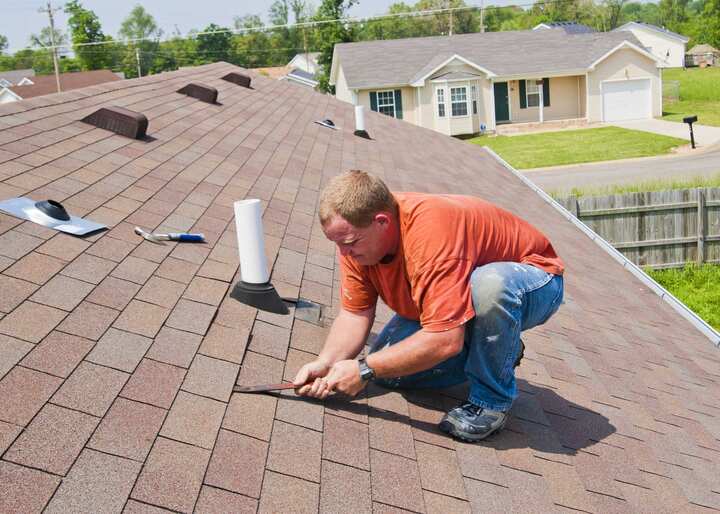
A guide to dealing with emergency roof leak repair
Homeownership is a great responsibility. One of the most important home maintenance tasks is to keep the roof in good condition. A leaking roof can lead to water damage and other costly repairs, so it’s essential for homeowners to know how to handle emergency roof leak repair.
Identifying a leak
Identifying a roof leak is an important part of emergency repair. When a leak is present, it can cause extensive damage to the structure of the building and surrounding property if not addressed in a timely manner. To identify a leak one must first examine the outside of the building, looking for visual signs such as water stains and discolored materials. In some cases, there may be physical evidence of water penetration.
Additionally, one should pay attention to any sounds coming from the roof, such as dripping or running water. If any of these indicators are noticed, it is important to investigate further before attempting repair. Inside the building, check for stains on ceilings and walls that indicate where the leak might be located. Probing these areas with a tool can also help identify which area needs to be repaired. Once identified, proper steps should be taken to ensure that the leak is addressed as soon as possible to prevent further damage.
Locating the source of the leak
Once the leak has been identified, it is essential to determine its source. This can be a challenging process as roof leaks can have many potential origins. Firstly, it is important to inspect the roof itself. Look for cracked or missing tiles, broken flashing, and other damage that could be causing the leak. Additionally, look for areas near chimneys and vents where water could be entering through gaps in the flashing. It is also advisable to examine the gutters as blockages or debris could be preventing water from flowing away from the roof.
Next, inspect any insulation or air barriers installed in the attic space below the roof. If these are wet or damaged this can indicate that there is a breach in the roof above them allowing water to enter. Finally, check for any pipes or wiring running through the attic which may have been damaged by age or wear and tear and become a point of entry for water into the home.
Safety considerations
When dealing with emergency roof leak repair, it is important to consider safety. To ensure the safety of yourself and those around you, here are some tips:
First, make sure that your space is properly ventilated by opening windows or using fans. This will ensure that any fumes from the materials used in roof repairs do not accumulate and become hazardous. It is also important to wear protective gear such as goggles and gloves before starting any roof repair work. Additionally, working on a ladder can be dangerous; always use caution when climbing or descending ladders.
In addition to physical safety considerations, it is important to adhere to all applicable laws and regulations when dealing with emergency roof repairs. Be sure to check local building codes in order to ensure that any repair work done is up-to-date with current standards. An experienced contractor should always be consulted when performing major repairs on roofs as they have a better understanding of the local laws and regulations.
Steps for repairing a roof leak
Once safety considerations have been addressed, the next step is to prepare for roof leak repair. This preparation should include gathering all necessary materials and tools, such as a ladder, roofing nails, sealant, patch material, and a hammer. It may also be beneficial to have an assistant who can help with the repair process. Furthermore, it is important to inspect the surrounding area and make sure there are no obstructions that could impede or endanger the repair process.
The actual process of repairing a roof leak requires removing any protruding nails from the affected area and scraping away any loose shingles or tar paper. Once this is done, it is time to apply a layer of sealant around the affected area in order to prevent further water damage. After this has dried properly, the patch material should be cut to size and applied over the hole or crack in order to patch it up securely. The final step is to nail down the patch material using roofing nails and then caulk around its edges for extra protection.
Tips to avoid future leaks
The best way to avoid emergency roof leak repair is to take preventive measures. Regular inspection of the roof and its components should be conducted on a regular basis in order to identify any potential issues before they become serious problems. Making sure that all roofing materials are properly installed and maintained, as well as addressing any existing damage, can help minimize the risk of future emergency repairs.
Regular maintenance and upkeep of the roof can also help prevent future leaks. Cleaning debris from gutters, flashing, chimneys, skylights and other areas where water may collect is an important step in ensuring long-term roof performance. Additionally, checking for signs of wear such as cracked or missing shingles should be done regularly in order to prevent further damage from occurring.
In addition to regular inspections and maintenance, investing in quality roofing materials can help ensure a longer lifespan for your roof. Quality roofing products can resist extreme weather conditions much better than cheaper versions and provide extra protection against water damage. Investing in quality materials will not only save money on costly emergency repairs but also ensure that your home is protected from potential damage caused by severe weather conditions.
If you're in need of any roof maintenance or leak protection, don't hesitate to keep in touch with our emergency roof repair specialists.